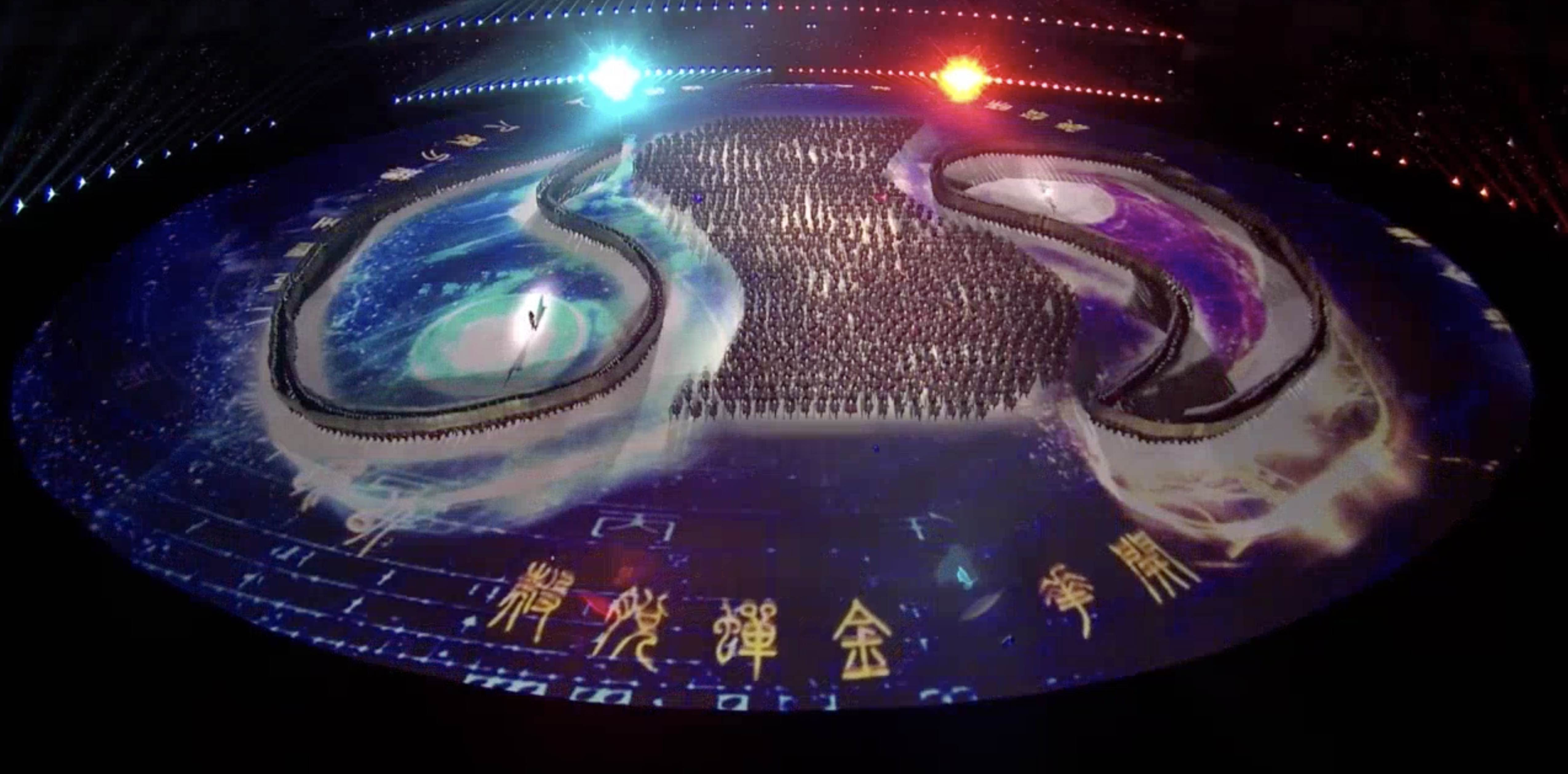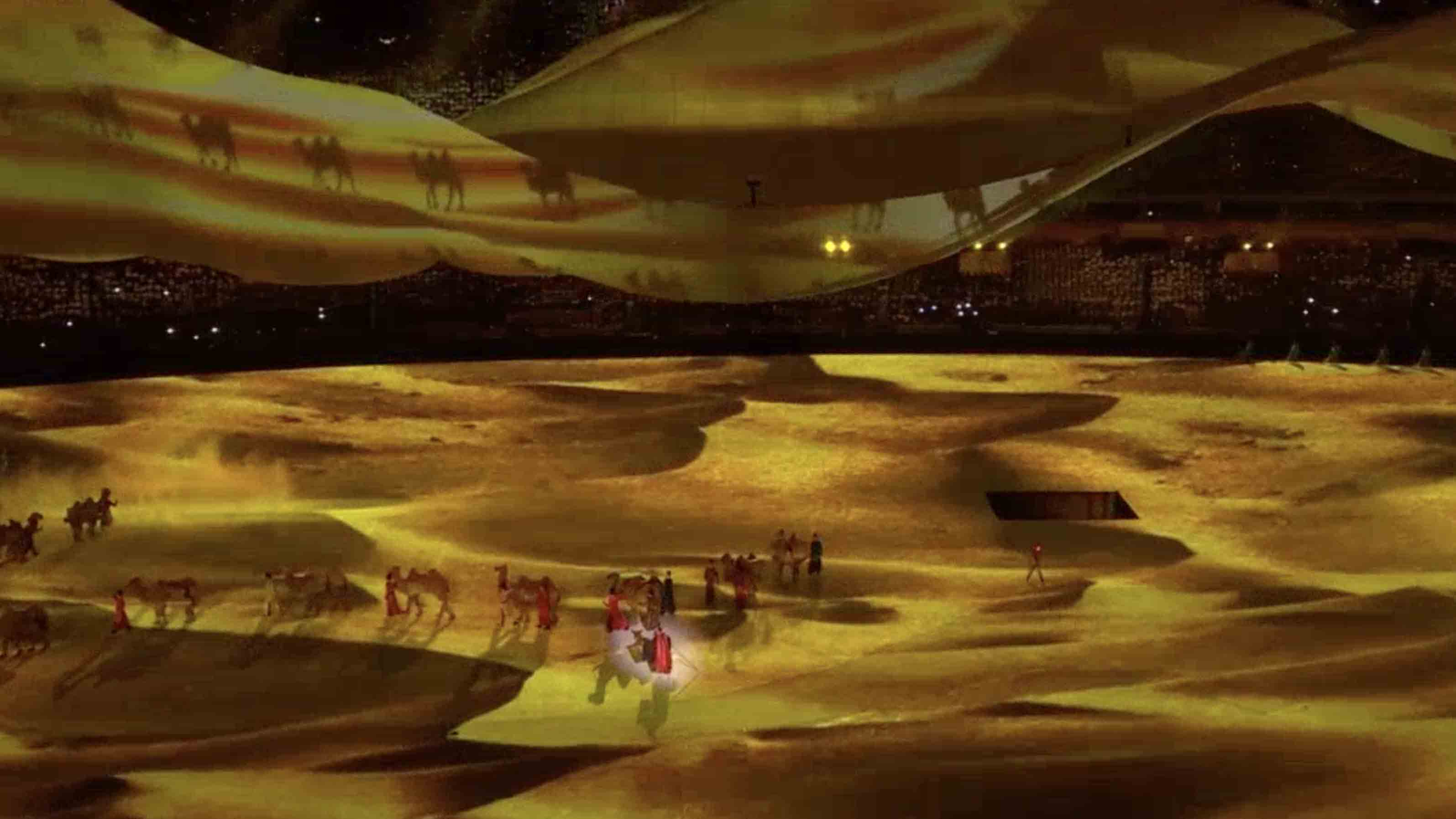The opening ceremony of the 7th CISM Military World Games was held on Friday evening in front of an audience of thousands in Wuhan, Hubei Province.
The artistic performance was divided into two parts with a collection of traditional Chinese culture and the achievements of China's armed forces in military reform and showcases the Belt and Road Initiative linking up the world.
In the first part of the performance, the audiences experienced the time-honored Chinese civilization through the light and shadow transformation, including the oracle bone script, Sun Tzu's "The Art of War," the Diagram of Tai-chi, and the "Thirty-six Stratagems."
05:52

In the program, the shield formation looks like a spreading roll of Sun Tzu's "The Art of War" on bamboo slips. The compass vehicle featured in the formation points the way for the Chinese sons and daughters to explore the mystery of the world, an invention that had a far-reaching impact on military culture and human civilization.
"Wu" (military), a Chinese character in ancient style, is composed of two parts, namely, "Zhi" (end) and "Ge" (spear), meaning that the military is employed to stop the use of arms. This character represents the Chinese philosophy of "harmony and unity," which has contributed significantly to mankind's efforts to settle the issue of war and peace.

"Path of Harmony & Unity," a program of first section of the opening performance of 7th CISM Military World Games in Wuhan, Hubei, October 18, 2019. /CGTN Photo
"Path of Harmony & Unity," a program of first section of the opening performance of 7th CISM Military World Games in Wuhan, Hubei, October 18, 2019. /CGTN Photo
And, the Diagram of Tai-chi and the Thirty-six Stratagems reflected the quintessence of the Chinese wisdom and strategy accumulated in the country's long course of history.
Additionally, the image of the Great Wall also appeared during the program. As a defense project built for the purpose of safeguarding peace, the Great Wall conveys China's longstanding aspiration to pursue harmonious coexistence and development with other countries.

The mural image of "Flying Apsaras" in Dunhuang Grottoes in the program named "The Silk Road." /CGTN Photo
The mural image of "Flying Apsaras" in Dunhuang Grottoes in the program named "The Silk Road." /CGTN Photo
Another program is "The Silk Road." As the ancient sea route of communication, trade, and cultural exchanges between China and foreign countries, the Silk Road has witnessed the prosperous cultural development of China.
The mural image of "Flying Apsaras" in Dunhuang Grottoes, together with the fluttering silk ribbons, signify Chinese civilization, which was spread via the overland Silk Road and the Maritime Silk Road to the rest of the world and has brought benefits to all mankind.
05:03

The second part of the performance mainly presented China's reform achievements in recent years and the concept of peaceful development, including the Belt and Road Initiative and "the vision of building a community with a shared future for mankind."
To date, China is the largest soldier contributor to the UN among its permanent members of the Security Council. In this part of the performance, the audience saw the Chinese peacekeeping troops as the defenders of the international order in elegant demeanor.